Did you find this article helpful for what you want to achieve, learn, or to expand your possibilities? Share your feelings with our editorial team.


Mar 31, 2021
VISION & IDEAEnvironmentally friendly living that doesn’t constrain lifestyles: a new way of thinking about energy
Sharing electricity by region for a carbon-neutral world
The global population is growing and digitalization is spreading throughout society. This raises the question of how we should create, and consume, the electricity necessary during such changes. Supplying all required electric power via thermal power plants will cause CO2 emissions to rise. Even if everyone strives to minimize energy consumption on a personal level and electricity usage decreases here and there, this approach requires a sustained effort over the long term and is unlikely to succeed.
One possible solution, which has been garnering increasing attention, is the idea of sharing electricity on a region-wide basis in order to make sustainable energy sources viable. Let’s look at how this approach can help us to live in a more environmentally friendly manner while also enriching our lives, without constraining our lifestyles.
Contents of this article
Eco-friendly living: inconvenient and unrealistic?
Increasing numbers of people are thinking about the environment—how we can live in ways that protect and preserve it. Many of us take small measures every day such as carrying reusable bags for shopping instead of using plastic bags, minimizing product packaging and wrapping, and refraining from using unnecessary items and consuming too much.
Things we can’t physically see or touch but use every day, such as electricity, are not inexhaustible resources: about 80 percent of the electricity in Japan is produced by thermal power plants, meaning huge amounts of fuel are consumed and CO2 is emitted in order to power the nation each day. Electricity is essential for modern life, yet we are relying largely on unsustainable methods to produce and supply it.
If everyone were to reduce the amount of electricity they use, the result would be far less burden on the environment, but saying and doing are different. Remembering to turn off every light when not in use, constantly adjusting the air conditioner temperature setting, and not reheating the bathwater requires putting up with inconveniences and extra effort every day, which is hard to keep up. Constraining our lifestyles in this way is not realistic and so these habits are unlikely to take root.
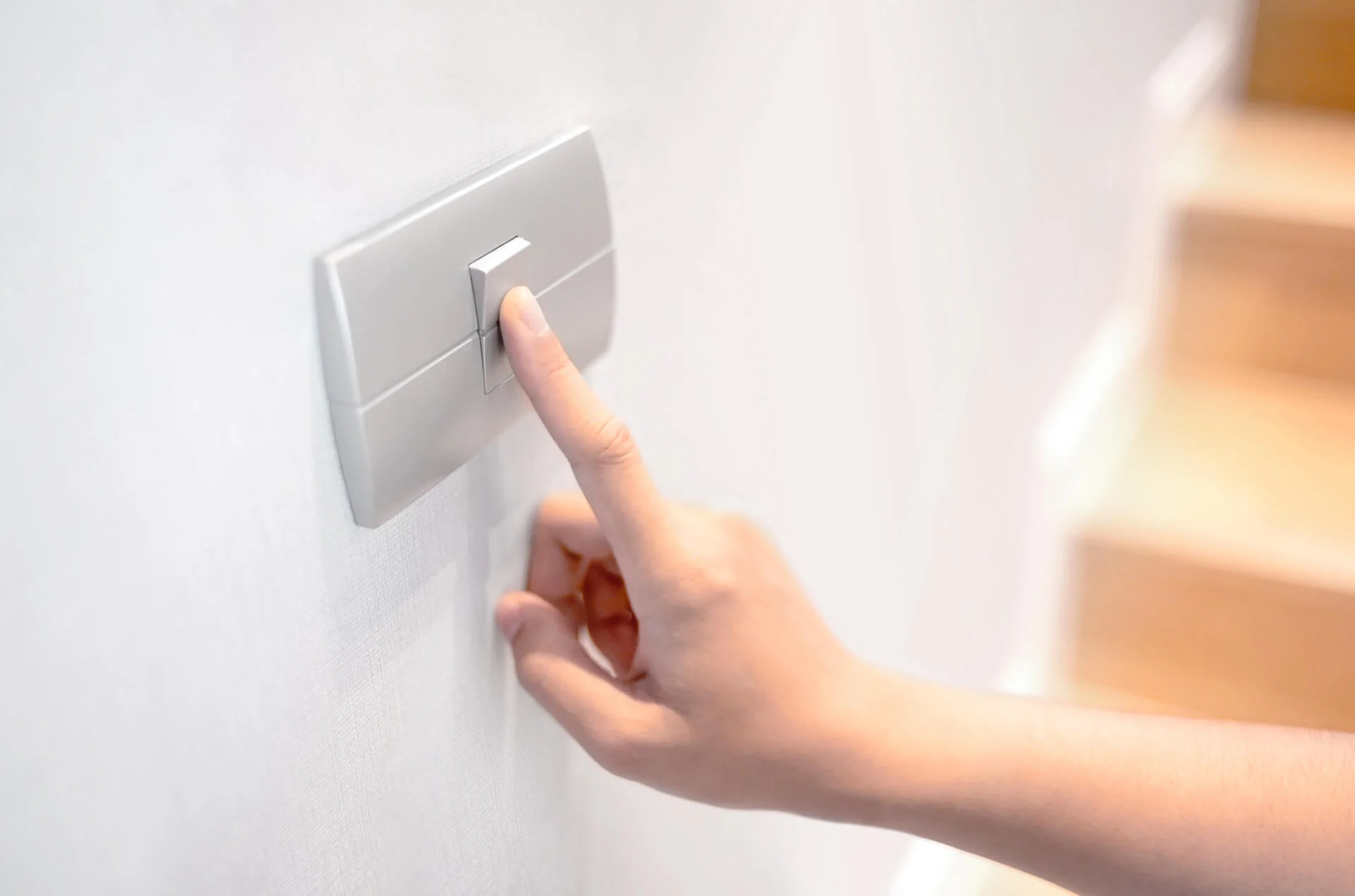
Some automated way of achieving the same energy-saving results is needed, so our lifestyles simply become more eco-friendly on their own. That’s where the virtual power plant (VPP) concept comes in: this approach, aimed at achieving carbon neutrality through environmentally friendly living, is spreading around the world. What is VPP?
Smart energy use via sharing of electric power throughout the region
Electric power is mostly produced at power plants and then sent to consumer locations. However, as society develops, power consumption also increases greatly, resulting in rapid and continuing rises in CO2 emissions from power plants.
Efforts on electrification in the motorization field are underway, with the goal of realizing a carbon-neutral society by the year 2050, but these alone cannot solve the underlying problem. In addition to the electrification of vehicles, it is essential to shift the conventional thermal power generation to the natural energy power generation systems such as solar power and wind power, to reduce CO2 emission in the stage of power generations.
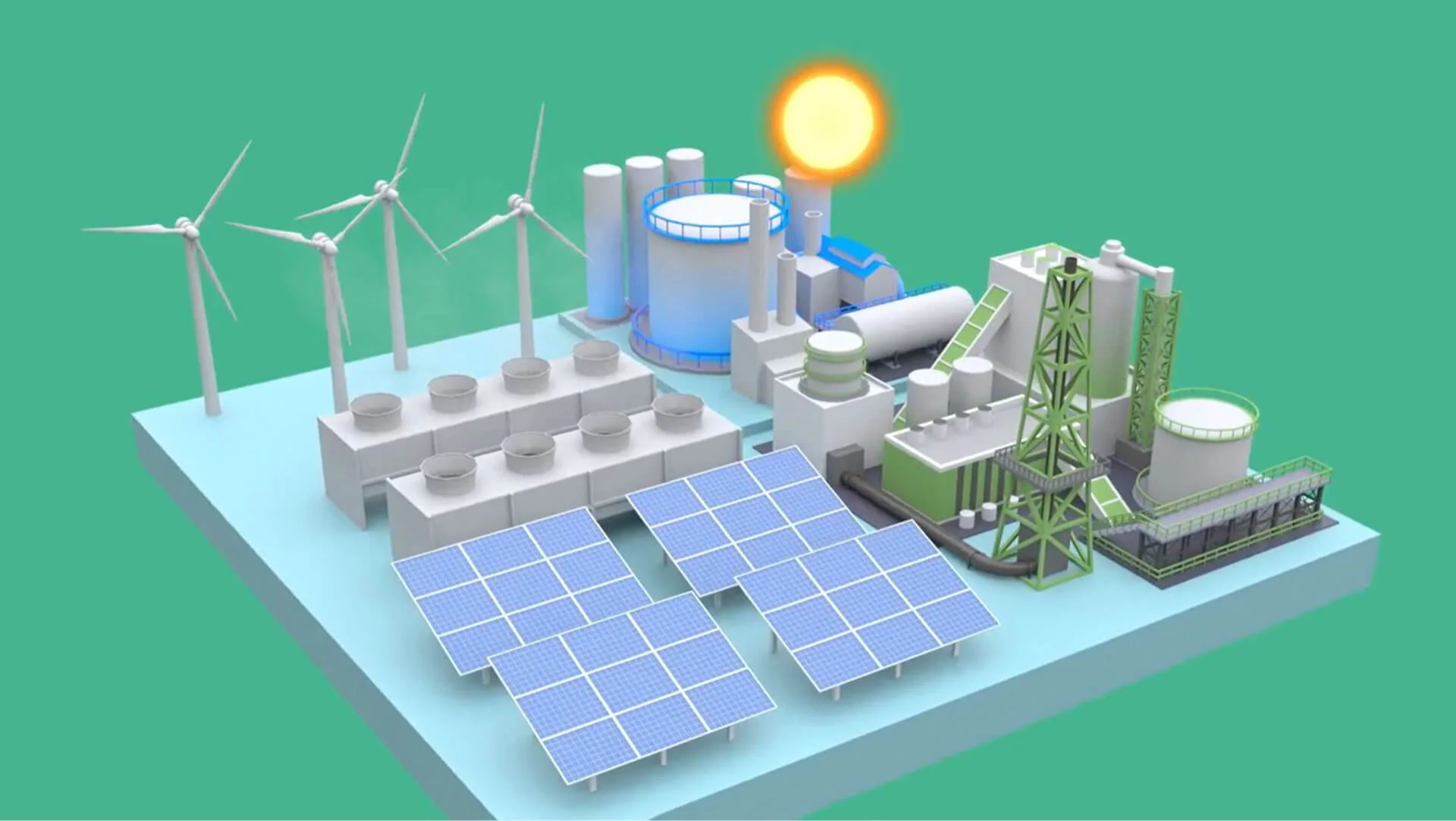
Why do we still need to rely on the thermal power even though we have cleaner generation systems than that? It’s because natural power is unstable in amount of generation due to the weather conditions. For example, solar power soon cannot generate power enough when we have a stretch of bad weather. The truth is, renewable energy is not a dependable alternative to conventional thermal generation.
What we need is more reliable types of clean energy paired with a system that compensates for unstable energy production, and that’s where VPP comes in. Rather than having power plants alone generate the power and send it to users in the conventional one-way fashion, a VPP network makes use of houses, office buildings, factories, cars and other facilities and equipment with their own generators and storage batteries so that energy can be shared throughout the region and generation amounts adjusted as necessary.
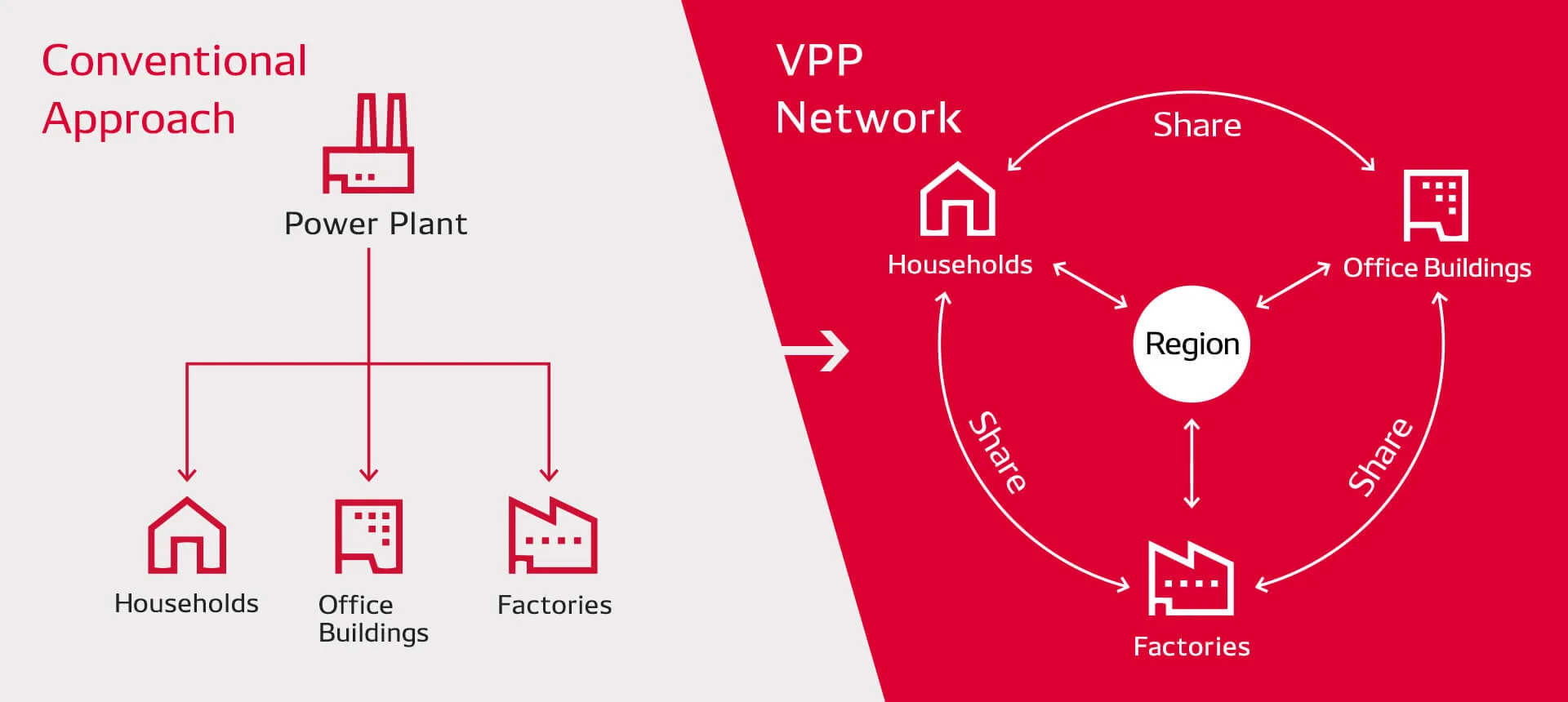
For example, if a large amount of electric power is generated in the afternoon, the excess power available can be kept in the storage batteries of households and cars for use during peak hours later. Conversely, when available electric power is insufficient to meet current needs, individual households can release their stored energy throughout the region-wide system so that users don’t have to rely on power plants alone.
The VPP system achieves a good balance between power generation, storage, consumption and conservation throughout the region, enabling waste-free and efficient utilization of renewable energy sources. DENSO is working to deploy this type of VPP approach in practice in order to achieve a sustainable society.
Toward environmentally friendly living that doesn’t constrain lifestyles
With the goal of reducing society’s environmental load, DENSO has focused on energy management in automobile systemswhile also continually refining energy control technologies in order to maximize comfort and convenience for users.
Kimihiro Igami, who is involved in VPP-related operations at DENSO, said about the Company’s motivation for establishing VPP systems in society today: “DENSO has been involved in energy management for many years. We make the best of the resulting technologies not only to make our operations more sustainable, but also to pursue meaningful applications in areas outside of the automotive industry. In this way, we can make more widespread and larger contributions toward creating an eco-friendly society. Even though VPP systems are not yet common in Japan, we believe they will become more widely used around the world in the future, which is why now is the time for DENSO to start pursuing efforts in the VPP field.”
Currently, DENSO provides household equipment connected to VPP systems along withHEMS (home energy management systems) for managing the equipment, as well as resource aggregator systems used to integrate the management and control of home energy usage.
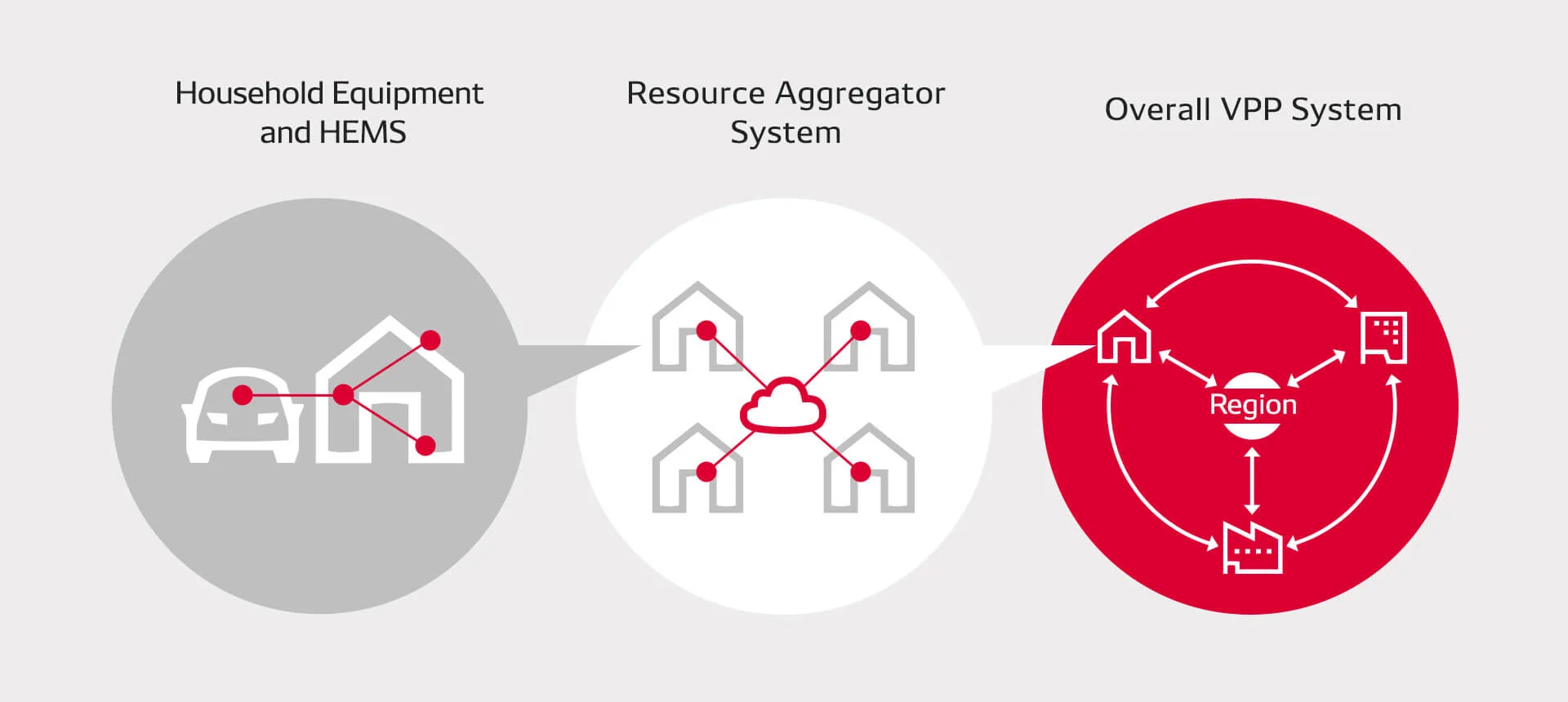
This type of setup can, for instance, automatically control air conditioner temperature settings, keeping them within comfortable levels for users while factoring in overall electricity consumption by the region as a whole. It can also make changes to the time taken for heating one day’s water, and carry out energy charge and discharge via equipment with power storage functions. Looking to the future, DENSO is also considering additional features such as automatically turning lighting on and off and adjusting the brightness.
Yuki Nakai, who works together with Igami in VPP-related operations, believes that this type of system can enable waste-free and effective utilization of renewable power. “We look at feedback carefully from all system users and make fine adjustments in response,” says Nakai. “We have to figure out adjustable range of energy for users not to feel uncomfortable. And we have to figure out the suitable range for each household by analyzing each energy condition, because it differs from person to person. DENSO has developed the technologies from consumers’ perspective, and that’s why we can accomplish the task.”
Why is DENSO so dedicated to ensuring user comfort and convenience in daily life? Igami has the answer: “Because we want users to live in environmentally friendly ways at their own pace without stress.”

Igami continues, “I’m sure that people will not continue to use the VPP system if it requires consumers’ extra effort to use it, or if they lose their convenient daily life by using it, even if the system is for saving energy. By focusing on the three key concepts of unconscious changes, comfort, and eco-friendliness, we can make the VPP approach more sustainable and acceptable to people throughout society. We believe the VPP system will have a major impact on efforts toward achieving carbon neutrality. In order to achieve widespread VPP deployment as soon as possible, we are using our technologies and capabilities here at DENSO in order to improve system precision.”
Pursuing carbon neutrality while remaining focused on the user
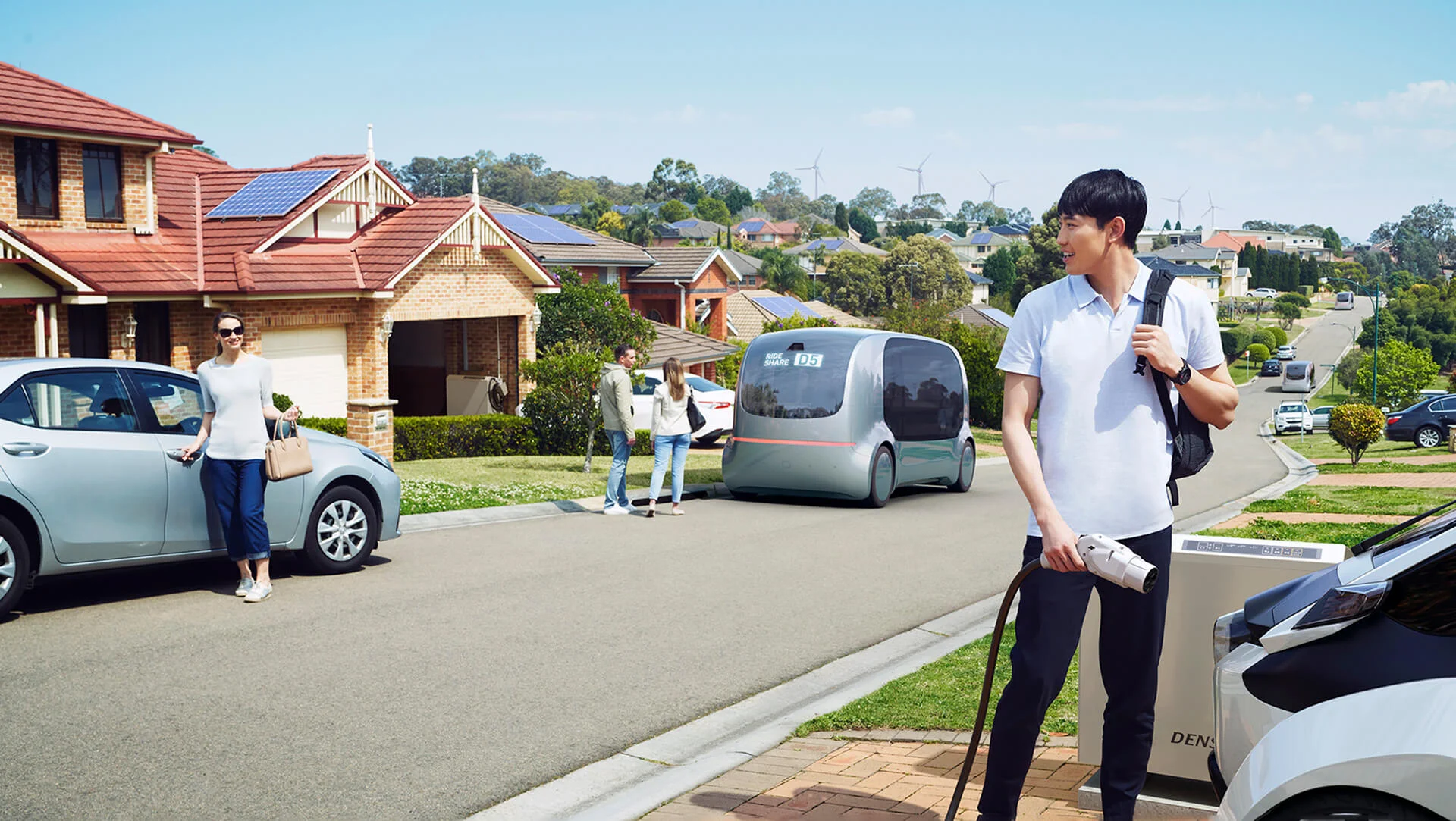
The world’s population will continue to grow while the digitalization of society will accelerate through advancements in 5G standards and other communication technologies, as well as increasing networking of appliances, cars and other equipment and apparatus in our daily lives. In short, we will become even more dependent on electricity as society evolves. Electric power is thus the cornerstone of our lives, and the importance of pursuing clean energy and efficient energy usage will only grow.
VPP networks are next-generation energy management systems, designed for the future while still preserving our current living standards. DENSO plans to integrate VPP systems in households as well as office buildings, factories and other areas while utilizing it in conjunction with clean power generation methods such as hydrogen, waste heat and biomass generation. In these ways, VPP systems will enable these to serve as reliable, stable power generation approaches capable of meeting large energy demands.
Making use of technologies developed over the years while remaining focused on user needs, DENSO is pioneering these types of innovations. We will value the user comfort and convenience as we implement these changes in society toward the goal of global carbon neutrality.
COMMENT
Changing your "Cant's" into "Cans"
Where Knowledge and People Gather.


